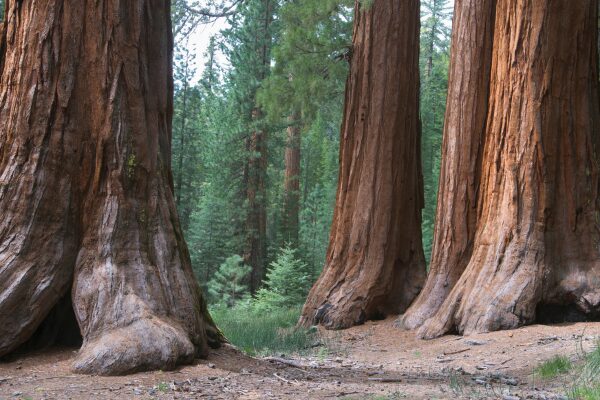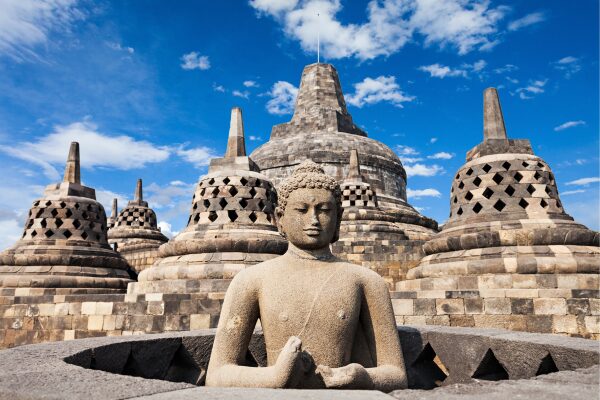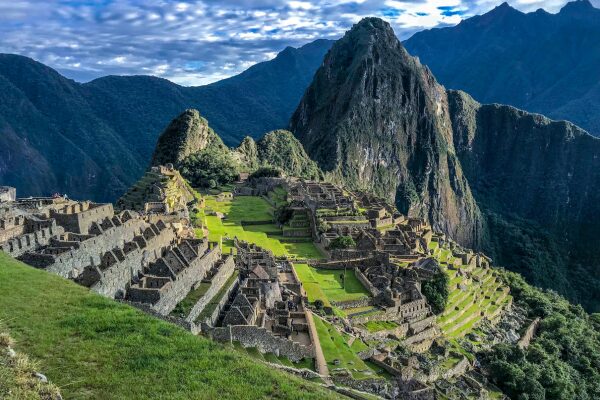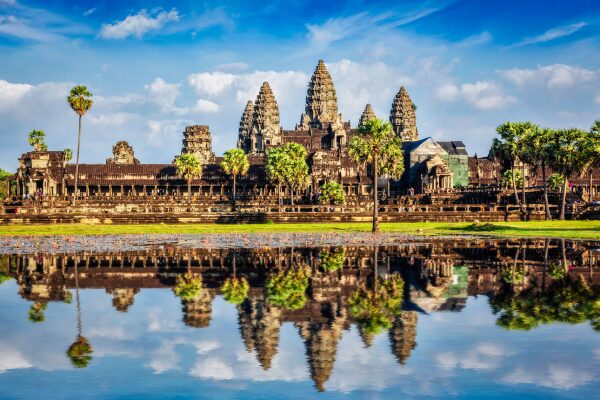Introduction:
Nature has always played a significant role in humanity’s spiritual journey. Since time immemorial, people have sought nature as a refuge for the soul, a space for contemplation and a source of inspiration. Connecting with nature not only calms the mind but also nourishes the spirit, providing a sense of peace and inner harmony.
In this modern era, where the fast pace of life often disconnects us from the natural world, the keyword “Sacred Connection” takes on special meaning. It represents the deep connection between nature and spirituality, a link that takes us back to our most essential roots and reminds us of the beauty and majesty of the world around us. In the next few paragraphs, we will explore five places around the world where this sacred connection is palpable, where nature invites us to delve into its grandeur and reconnect with the divine within ourselves.
1. Redwood Forest, California, USA

Redwoods, giants among trees, are true witnesses of time, standing majestically for centuries across the California landscape. With their imposing trunks that soar toward the sky and their crowns that touch the clouds, these trees inspire awe and reverence. Their long history goes back millennia, having survived fires, storms and other adversities, making them enduring symbols of resilience and strength.
The spirituality associated with the grandeur and longevity of redwood trees is profound and impactful. Walking among these giant trees, it’s easy to feel humbled by the magnitude of nature and reflect on our place in the world. Many Native American cultures consider redwood trees to be sacred, attributing them spiritual powers and seeing in them a connection to the ancestors and the divine. For many visitors, being among the redwoods is a transcendental experience, a moment of communion with something greater that transcends time and space.
Points of interest in the Redwood Forest include the renowned Sequoia National Park and the equally impressive Yosemite National Park, both located in California. In Sequoia National Park, visitors can admire some of the oldest and largest redwood trees in the world, including the famous General Sherman Tree. Yosemite National Park offers a stunning landscape of mountains, valleys and waterfalls, complemented by the majestic presence of redwoods in the Mariposa Grove region. Both parks provide unique opportunities to experience the spirituality of nature and connect with the grandeur of the redwoods.
2. Borobudur Temple, Indonesia

Borobudur Temple is more than an architectural masterpiece; It is a sacred site of unparalleled importance in the Buddhist tradition. Built in the 9th century during the Sailendra Empire, the temple served as a center of religious and spiritual practices for devotees of the Buddhist faith in the Java region of Indonesia. Its meticulous construction and strategic hilltop location demonstrate the ancient builders’ devotion to spiritual quest and enlightenment.
The architecture of Borobudur Temple is a tangible testimony to the Buddhist principles of enlightenment and meditation. Composed of nine overlapping platforms, representing the stages of the path to enlightenment, and more than two thousand panels carved with Buddhist narratives, the temple invites visitors to reflect on the transitory nature of life and the search for ultimate truth. Every architectural detail, from the winding corridors to the elaborate stupas, is designed to induce a state of contemplation and meditation, providing devotees with a profound and transformative spiritual experience.
To explore the spirituality within Borobudur Temple and its surroundings, visitors can follow in the footsteps of ancient Buddhist pilgrims who walked the ritualistic path known as “pradaksina”. During this circular journey around the temple, devotees recited prayers, meditated, and gazed at carved representations of Buddha’s teachings, finding inspiration and spiritual guidance along the way. Furthermore, the temple’s surroundings, surrounded by lush green fields and lush mountains, offer a serene and tranquil environment for practicing meditation and spiritual reflection.
3. Machu Picchu Mountain, Peru

Machu Picchu is much more than an archaeological wonder; is a spiritual sanctuary that has fascinated and inspired visitors for centuries. For the ancient Incas, this mountain had profound spiritual importance, being considered a sacred place of worship and celebration. Built in the 15th century, during the height of the Inca Empire, Machu Picchu was known as a lost city hidden in the Andes mountains, and served as a place of pilgrimage and worship of the gods.
The connection between the mountain of Machu Picchu, the cosmos and Inca spirituality is evident in its architecture and astronomical orientation. The city’s layout is aligned with the winter and summer solstices, suggesting a sophisticated understanding of celestial movements by the ancient Incas. Furthermore, elements such as the Intihuatana, an astronomical observation device, and the Temple of the Sun, dedicated to the solar deity Inti, indicate the importance of the mountain as a place of connection with the divine and the forces of nature.
The points of interest in Machu Picchu are numerous and offer visitors a fascinating insight into Inca spirituality. The Intihuatana, a carved stone that served as a sundial and astronomical observation point, is one of the site’s highlights, providing visitors with an opportunity to experience the wisdom and scientific sophistication of the ancient Incas. The Temple of the Sun, with its impressive architecture and stunning views, is another unmissable point of interest, where visitors can feel the divine presence and spiritual energy that permeates the mountain of Machu Picchu.
4. Angkor Wat Temple, Cambodia

Angkor Wat is more than a temple; it is a stunning testament to the spiritual and architectural power of the Khmer Empire. Built in the 12th century by King Suryavarman II, Angkor Wat is the largest religious complex in the world, covering an area of over 162 hectares. Originally dedicated to the Hindu god Vishnu, the temple was later transformed into a place of worship for both Hinduism and Buddhism, reflecting the rich spiritual diversity of the region.
The spirituality associated with Angkor Wat is multifaceted, incorporating elements of both Hinduism and Buddhism. In the temple’s bas-reliefs and sculptures, visitors can find representations of Hindu gods such as Vishnu and Shiva, as well as Buddhist images of Buddha and bodhisattvas. This unique synthesis of religious traditions reflects the complex history and deep spirituality of the Khmer civilization.
To experience spiritual serenity while visiting Angkor Wat Temple and its surroundings, it is important to set aside time for contemplation and reflection. Upon entering the temple, visitors are greeted by corridors decorated with sculptures and sacred inscriptions, creating an atmosphere of reverence and devotion. As they explore the temple’s vast spaces, visitors can find peaceful places for meditation and prayer, allowing themselves to connect with the divine and their own inner spirituality. Furthermore, the lush surroundings of Angkor Wat, with its serene lakes and verdant forests, provide an environment conducive to contemplation and spiritual renewal.
5. Mount Kailash, Tibet

Mount Kailash is a sacred mountain that rises majestically in the remote region of Tibet, exerting a powerful spiritual pull on devotees of various religious traditions. For Hindus, Mount Kailash is the home of the god Shiva and is considered one of the holiest sites in Hinduism. For Tibetan Buddhists, it is the center of the universe and an essential pilgrimage site associated with the god Buddha Demchok. Additionally, Mount Kailash is revered by followers of Jainism and Bön, who consider it a site of great spiritual importance in their respective traditions.
Spiritual pilgrimages to Mount Kailash are a fundamental part of the religious practice of many devotees. The circumnavigation of Mount Kailash, known as the kora, is a challenging and transformative spiritual journey that involves walking about 52 kilometers around the mountain’s base through arid terrain and harsh weather conditions. During the kora, pilgrims recite mantras, make offerings, and participate in purification rituals, seeking spiritual blessing and divine enlightenment.
In addition to Mount Kailash itself, there are several sacred points of interest around the mountain that complement the pilgrims’ spiritual journey. Lake Mansarovar, located at the foot of Mount Kailash, is considered one of the most sacred lakes in the world in Hindu and Buddhist traditions, being a place of spiritual purification and renewal. Tibetan monasteries around Mount Kailash, such as Chiu Gompa Monastery and Darchen Monastery, offer pilgrims the opportunity to participate in religious ceremonies and receive spiritual teachings from local monks, further enriching their spiritual experience in the region.
Conclusion:
Throughout this article, we explore five extraordinary destinations that offer a sacred connection between nature and spirituality. From the majestic redwoods of California to the towering Mount Kailash in Tibet, each place is a testament to the beauty and grandeur of creation, inviting visitors to immerse themselves in a spiritual discovery and renewal journey.
It is essential to recognize the importance of experiencing nature consciously and spiritually. In a world increasingly dominated by technology and the hustle and bustle of everyday life, finding time to reconnect with the natural world can be a vital source of balance, inner peace, and inspiration. By allowing ourselves to be enveloped by the serenity of the forest, the majesty of the mountains, and the calm of the lakes, we can open our hearts and minds to the divine presence that permeates all creation.
Therefore, we encourage our readers to explore these destinations and connect with spirituality through nature. Whether through a contemplative walk among the redwoods of California, a spiritual pilgrimage to Mount Kailash in Tibet, or simply feeling the breeze of the wind and the warmth of the sun on your skin, there are endless ways to experience the divine presence in the nature around us. . May this journey of spiritual connection and renewal inspire and strengthen each of us in our search for meaning, purpose and inner peace.
Travel tips and final thoughts:
Some practical suggestions can make the journey even more rewarding for travelers planning to explore these sacred natural destinations. It is important to research the best times to visit each location, taking into account factors such as climate, transport availability, and the number of visitors. Furthermore, when choosing accommodation options, it is worth considering the proximity to places of interest and the amenities offered, ensuring a comfortable and convenient stay during your trip.
We encourage our readers to share their own spiritual experiences at sacred natural sites. Each person has a unique story to tell, and by sharing our experiences, we can inspire and enrich the spiritual journey of others. Whether through photographs, written accounts or personal conversations, sharing experiences can create a network of connection and support among spiritual seekers around the world.
Finally, we reflect on the importance of connecting with nature for spiritual and mental well-being. In an increasingly urbanized and technological world, we often lose sight of our fundamental connection with the natural world. However, by reconnecting with nature, we find an inexhaustible source of inspiration, peace and renewal. Through contemplation of the mountains, the immensity of the oceans, and the serenity of the forests, we can reconnect with the divine within ourselves and find the balance and harmony so essential for our spiritual and mental health. May each trip to sacred nature be an opportunity for renewal and growth, guiding us on our journey toward wholeness and inner peace.